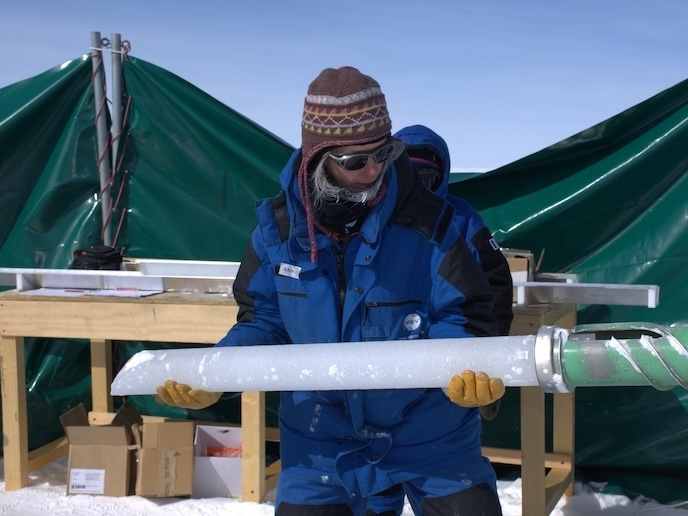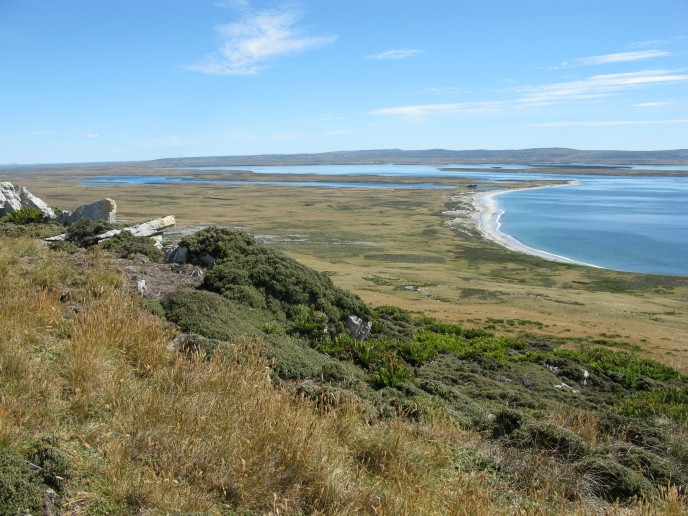New ice core analysis sheds light on historic climate change
An ice core drilled from the Eastern Antarctica plateau – a large ice sheet south of Australia – covers 800 000 years continuously. Scientists are using it to look at big glacial and interglacial changes over time indicating changes in temperature and climate. “Every 40 000-100 000 years there is one of these big climate changes,” explains ICORDA(opens in new window) (website in French) project coordinator Amaëlle Landais Israël, research director, Laboratory for Climate and Environmental Sciences(opens in new window) at the National Centre for Scientific Research(opens in new window) (CNRS) n France. The ICORDA project was funded by the European Research Council(opens in new window). “Even five years ago, we did not know if East Antarctica was warming. Now it seems it is, but it is difficult to anticipate which are the relevant timescales for climate change in Antarctica and make the link with global climate and environmental change. We use the ice core to address this,” she says.
Analysing trapped air bubbles in the ice core
Ice cores contain trapped air bubbles that form around 100 metres below the surface, preserving ancient atmospheric conditions. Scientists measure various proxies or tracers in the bubbles, such as dioxygen (O2) concentration and dioxygen isotopic composition, to date past climate conditions in Antarctica, as well as changes in higher latitudes and globally. Snow is porous close to the surface, allowing air through. Deeper down, the snow compacts and traps the air in bubbles. “It is important to understand how air is entrapped and how the entrapment process modifies molecules, regarded as climatic tracers, that we can measure and analyse,” Landais adds.
Improving ice core chronology
Over the 800 000 years represented in an ice core drilled as part of the earlier EU-funded EPICA project, she notes: “We knew approximately when the big climate changes occurred but there was uncertainty about 6 000-10 000 years at different points.” “We were able to successfully decrease that uncertainty in the chronology,” she says, describing it as one of the ICORDA project’s main achievements. The team also increased measurement resolution from every 1 000 years to every 100-500 years. This gave a more detailed understanding of the sequence of changes and allowed the team to ascertain whether temperatures rose before or after carbon dioxide concentrations. “Now we know that usually the Antarctic temperature starts to increase very early and then simultaneously with the CO2 concentration,” Landais notes. “The Antarctic temperature reaches its maximum first then, several centuries or millennia after, there is a maximum in the temperature at lower [global] latitudes.” The project used an Earth system model to run simulations over very long time periods of over 100 000 years. “The model connects measurements from laboratory experiments with ice core bubble measurements,” she explains. “Changes in ice bubble tracers can reflect the global flux of [plant] photosynthesis and low latitude precipitation.”
Going back 1.5 million years
In January 2025, under the EU-funded Beyond EPICA Oldest Ice Core project, an ice core was drilled in East Antarctica that goes back even further – 1.5 million years. “Our toolbox will be applied to that too,” remarks Landais.
Developing methods to use smaller ice samples
She points to new methods developed by the team to reduce ice samples from almost 1 kg to about 80 grammes for certain measurements. This is also crucial for the Beyond EPICA ice core. This was done by isotopic measurements of not just rare traces of pure argon in the ice sample, which is the usual method, but a combination of argon and nitrogen which is common in air. “When we use both [argon and nitrogen] we get the same scientific results which means we can use much less ice,” Landais explains, adding: “Each ice sample is precious.”




